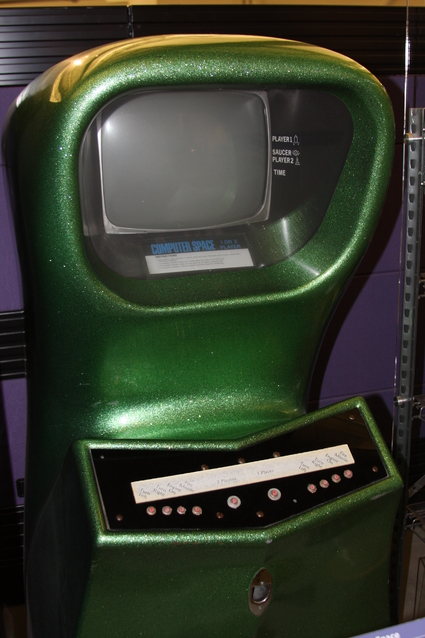1950-1969
In 1951 the first human-computer interaction was a fact. People could influence what they saw on their television screen. In 1958 the predecessor of the famous 1972 game Pong was released: Tennis for Two. It involved two controllers with a knob and a button. Shortly after, MIT started working on a series of interactive programs on the TX-O and later on the DEC PDP-1. Spacewar! (1961) was created by a group of MIT students, and distributed through the Internet. It is considered the first influential computer game. 1969 saw the birth of the first home video game console.
1970 - 1983
Throughout the seventies consoles become more and more mainstream, and video games burst into the consumer market. 1979 is considered to be the start of the Golden Age of video arcade games, with technical and design creativity peaking. Taito develops Space Invaders (1978), Namco creates Pac-Man (1980), Nintendo gives birth to Mario, and Atari introduces video games into arcades. We've got Donkey Kong in 1981, Joust in 1982 and Star Wars in 1983. Developers experiment with non-video technology, and new controls like the joystick are brought to life. The Golden Age comes to an end in 1983, when many arcades start disappearing.
1984 - 2000
The computer gaming market takes over, and in 1985 the arrival of the Atari ST and Commodore Amiga mark the beginning of the new era of 16-bit machines. The 90s saw a shift to 3D graphics and the start of handheld gaming. Thanks to cheap processors, 3D accelerator cards, sound cards and CD-ROMs it becomes increasingly easy to share and distribute games. Maxis launches SimCity and Quake is the first first-person shooter game that can be played by multiple players over the internet.
21st century
The 21st century has brought us mobile games and sixth generation consoles like the Dreamcast, the Xbox, Playstation 2 and the Nintendo GameCube. New developments succeed each other rapidly. The Nintendo DS and PSP are both released in 2004 and in 2008 Apple Inc. enters the arena. The Wii and Xbox Kinect are two of the most recent developments, along with a shift of focus from consoles to digitally-distributed content.
Now
Mobile phones have replaced huge processors, and ubiquitous networks have infiltrated the gaming world, allowing you to play anywhere, everywhere and with anyone - linking your results or avatar to your online social networks in a blink of the eye. Mediamatic's interactive ikInstallations make use of various sensors like GPS, RFID and Arduino. But even though we've come a long way since those first computers and graphic interfaces, the link with the old arcade games is still tangible. A whole generation of artists grew up with these games, and young game developers again and again return to the pixelated worlds and characters depicted in games like Super Mario.
For three months Mediamatic Bank will be transformed into an arcade, showcasing the history, present, and future of games.









